Take the 5 national cycle routes, one more beautiful than the other:
#1 Coastal route (Norwegian coast)
#2 Canal route (Haugesund – Larvik)
#3 Mountains and fjords (Kristiansand – up north)
#4 Rallarvegen (Railway workers’ cycle route; Bergen – Geilo)
#5 Numedal route (Geilo-Larvik), a few ferry rides and
add the Azores high, two weeks time, pack everything into a nut and give it a good shake.
It goes through Norway’s magnificent nature and eventful history. The tour is ready!
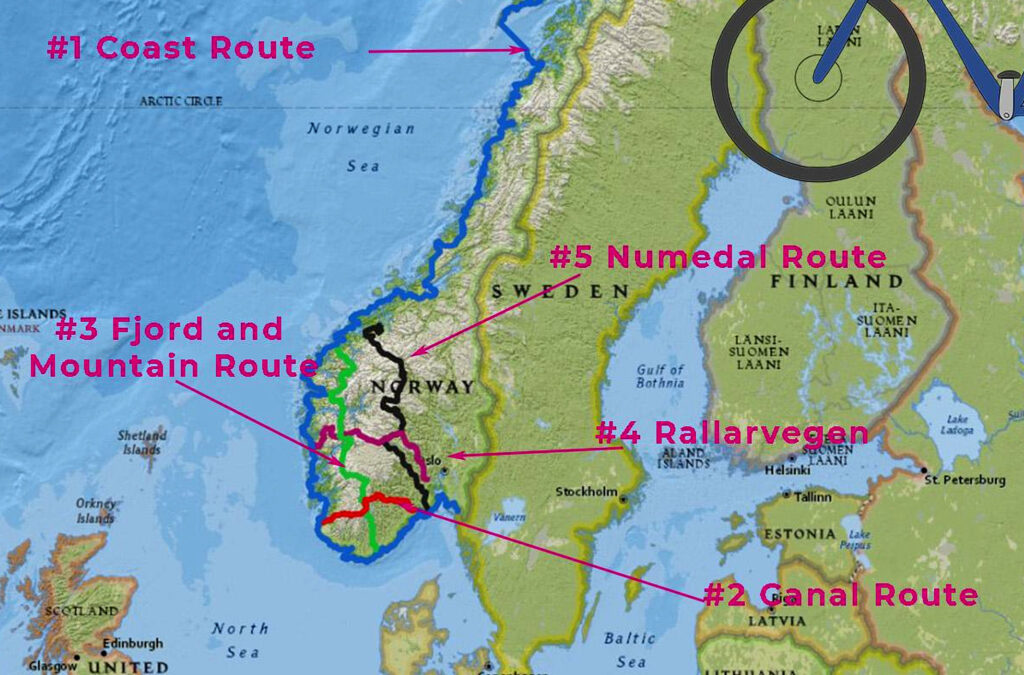
The rich and busy guys experience some of this in two days, travel with 4000 other like-minded people on a cruise ship through the Hardangerfjord to Flam and from there to Myrdal in the Hardangervidda, back to Bergen and off on the plane.
We try out the first option with the hike with the Folgefonna glacier view …
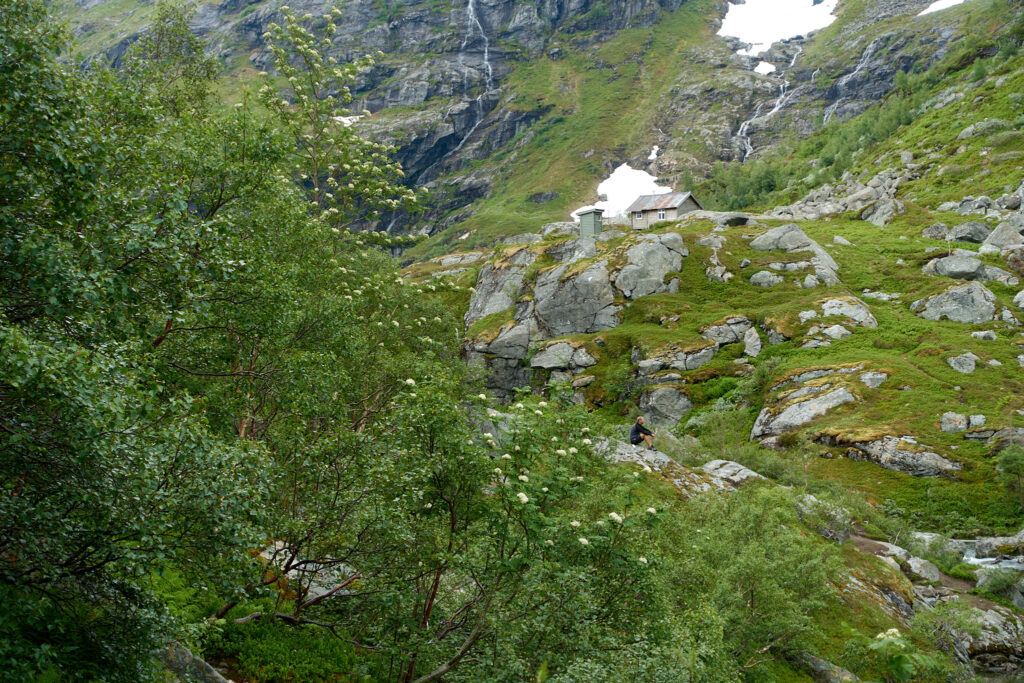
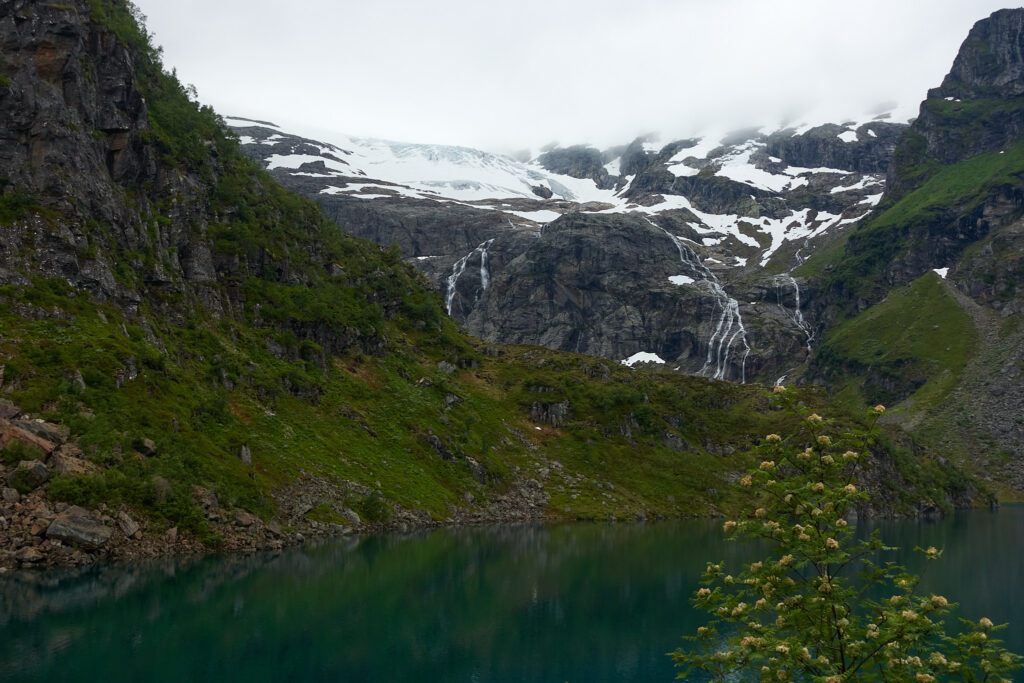
and a Norwegian children’s birthday party where we are invited to a traditional hot dog. Delicious!
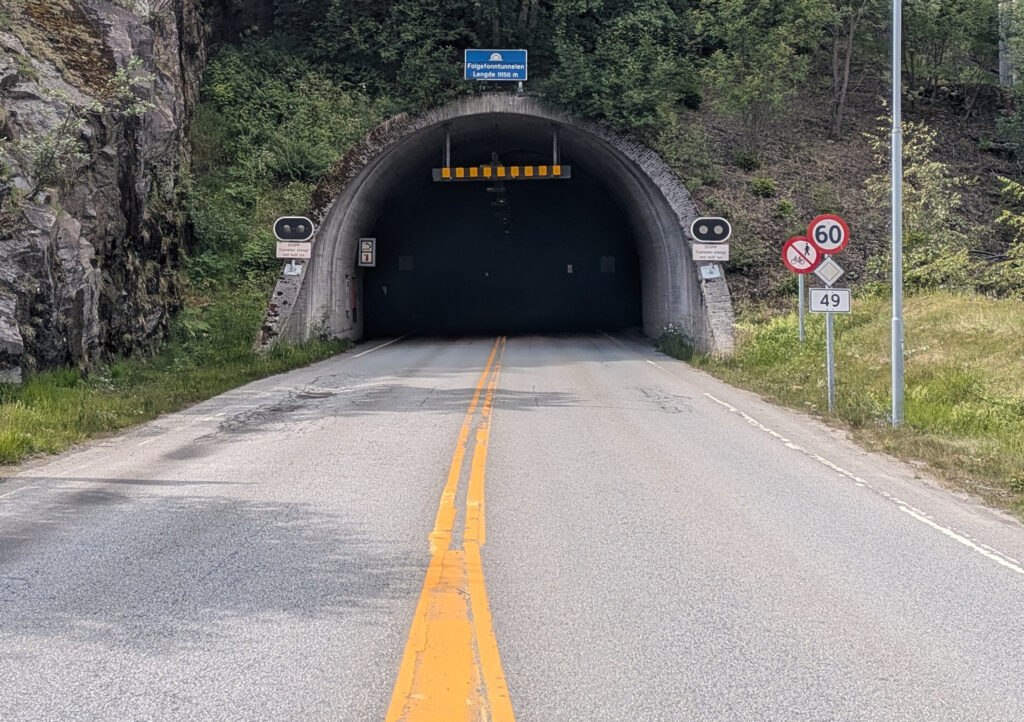
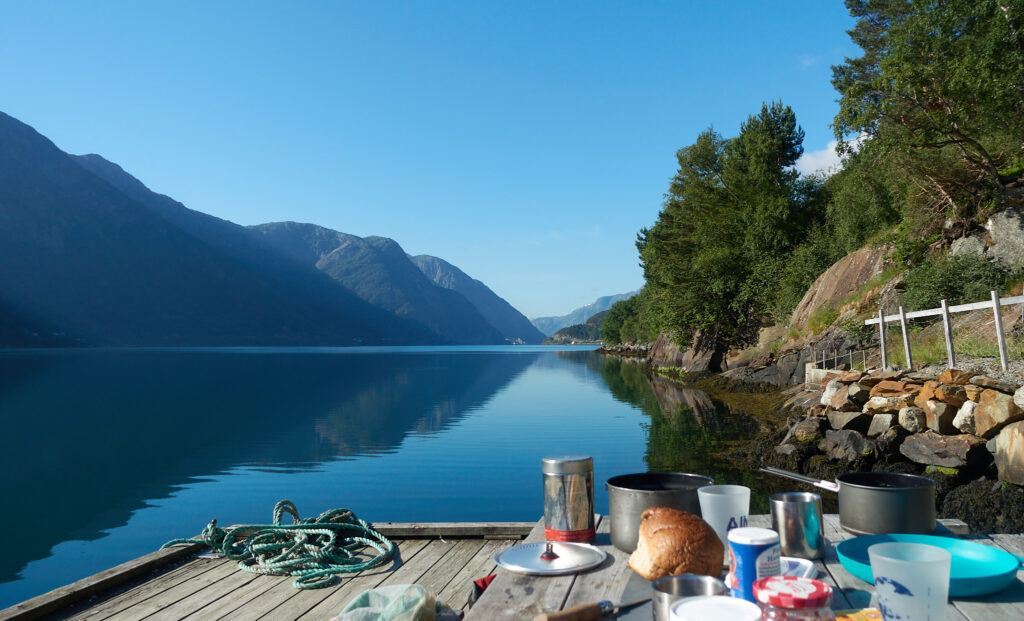
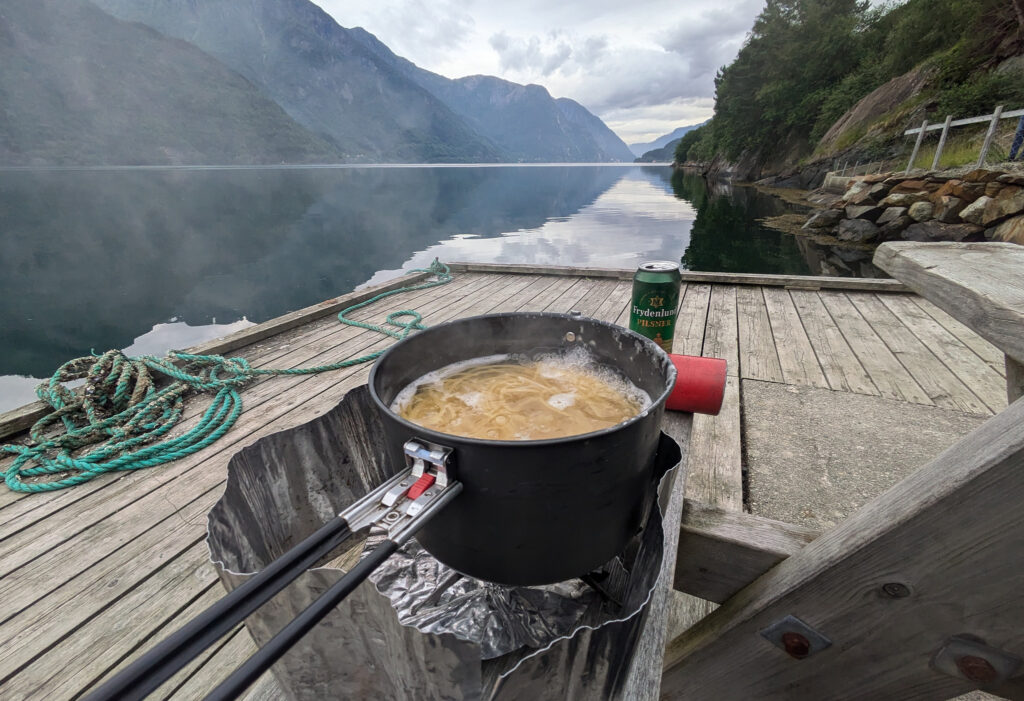
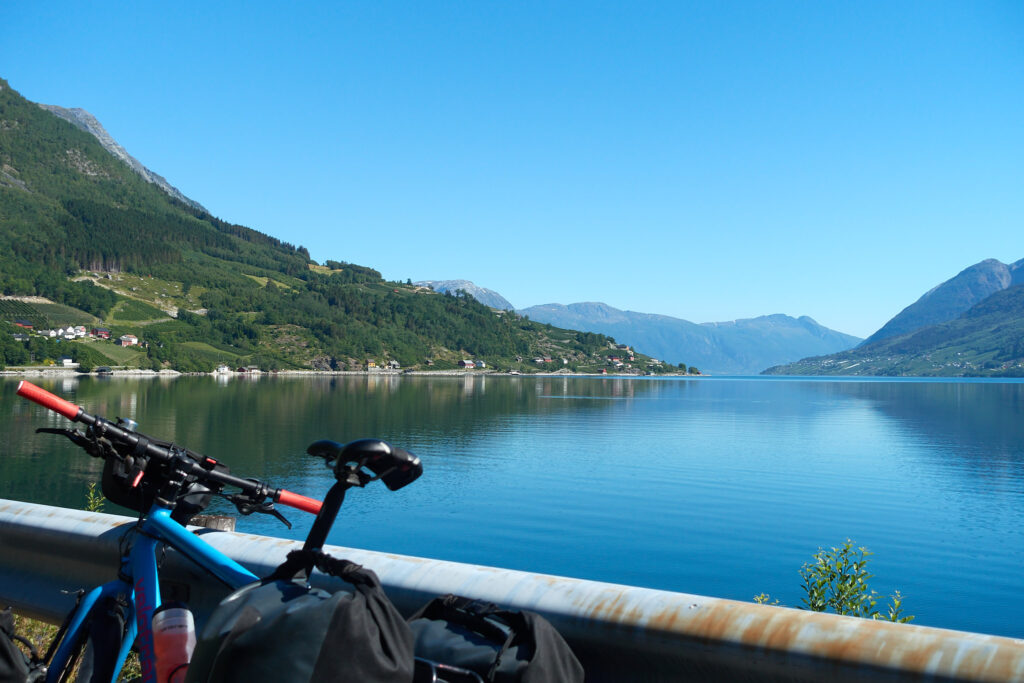
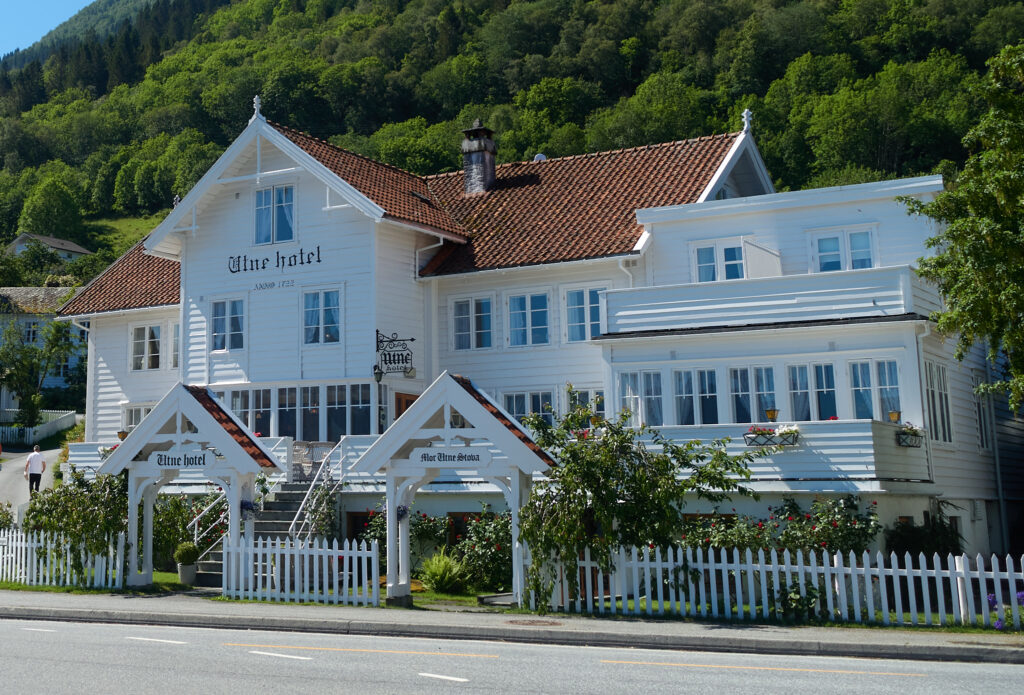
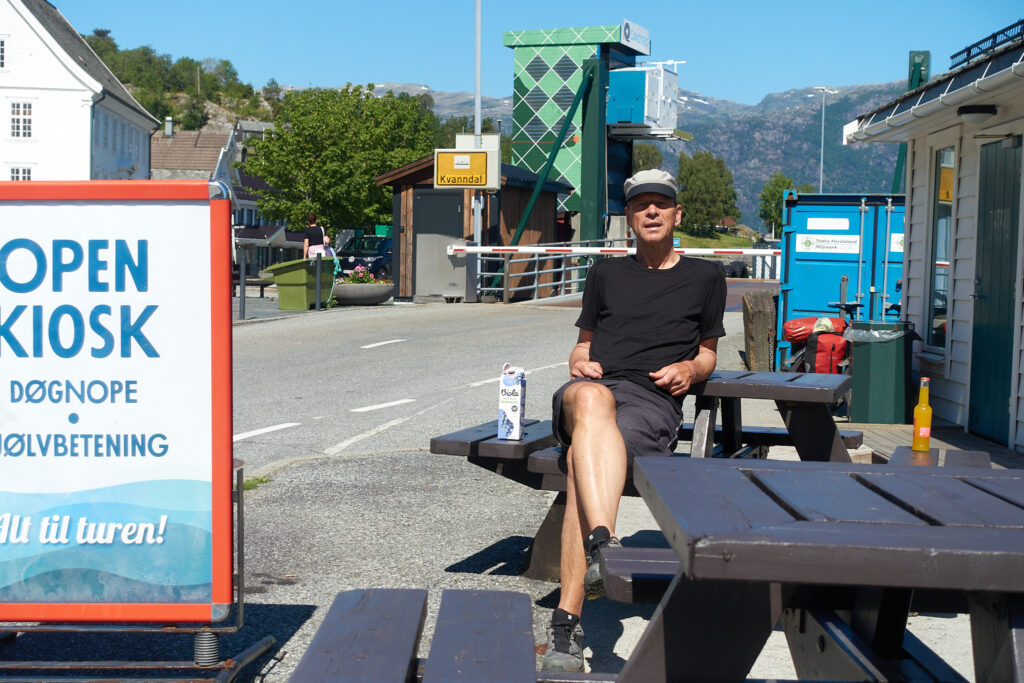
Take the ferry across the Hardangerfjord via Utne and on to Voss, the starting point for the hike in the Hardangarvidda.
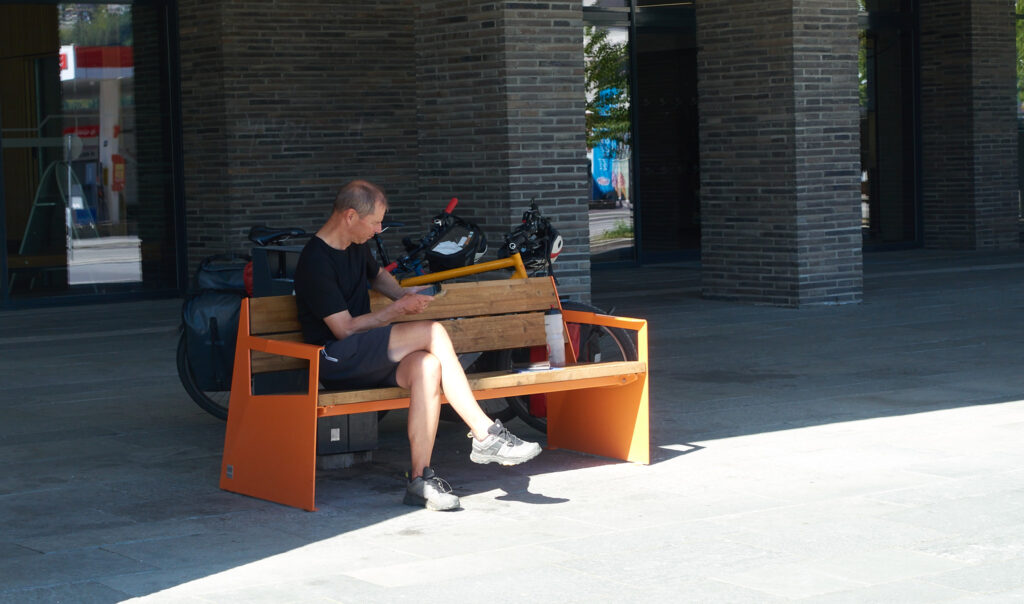
Rallarvegen with wild camping. It is fun. Who would have thought that Astrid would not miss the hot shower.
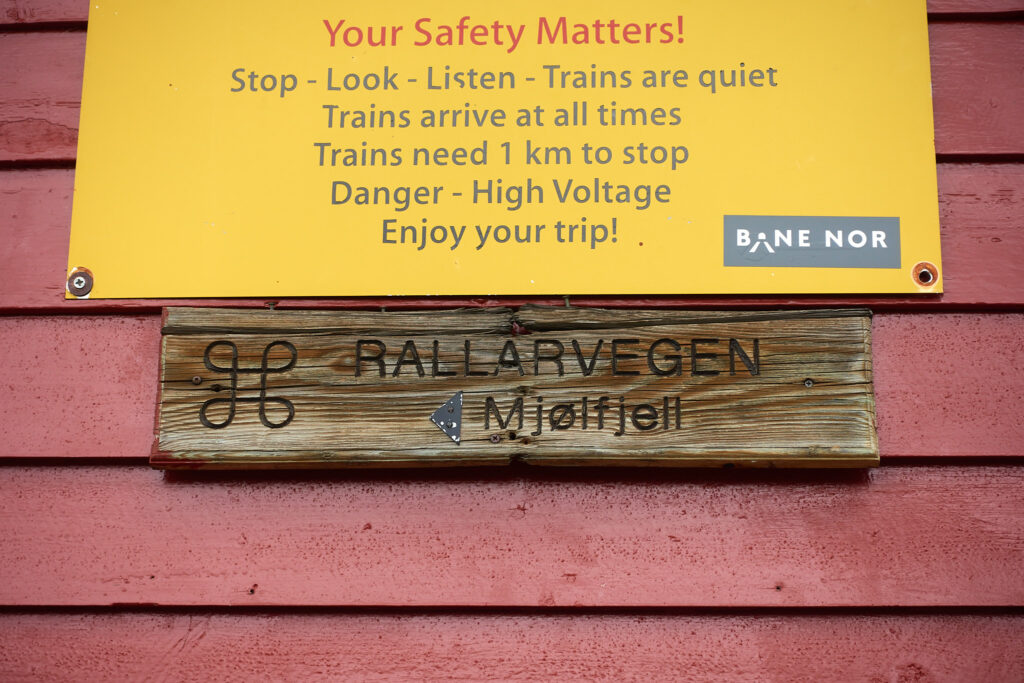
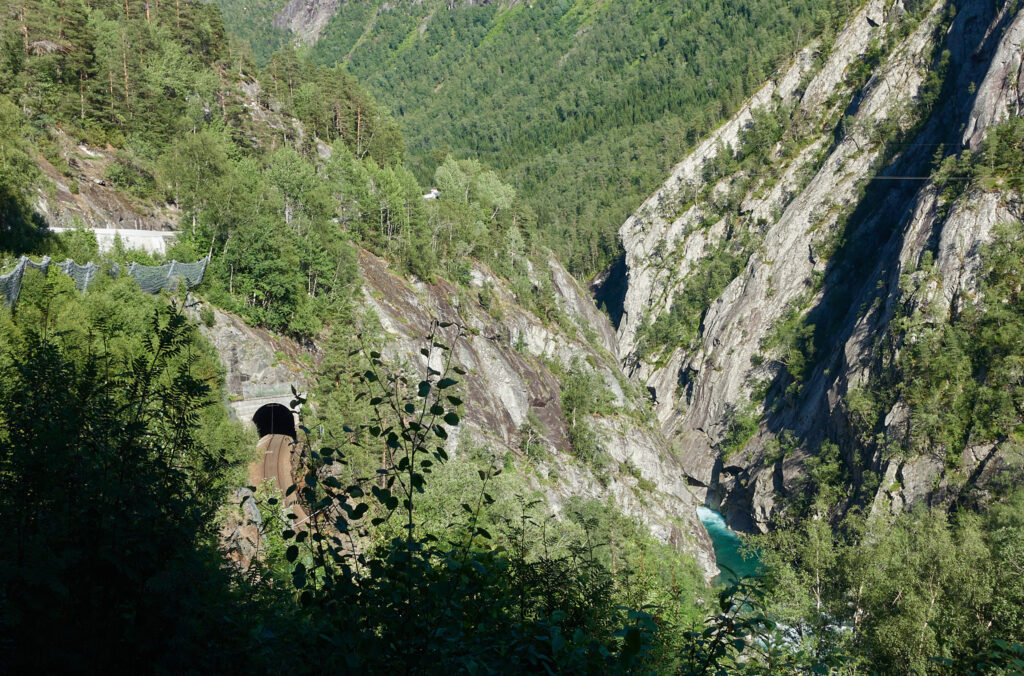
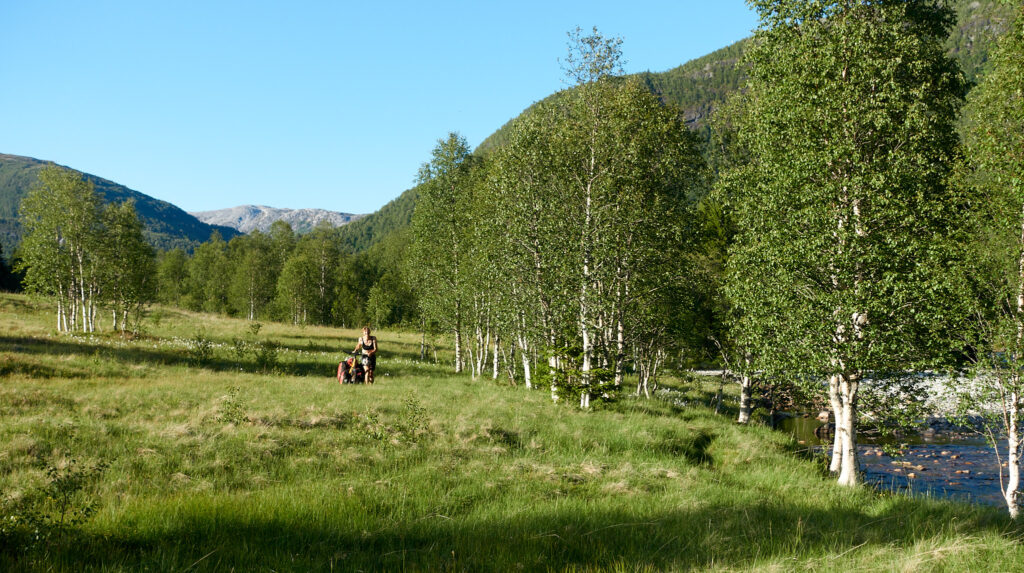
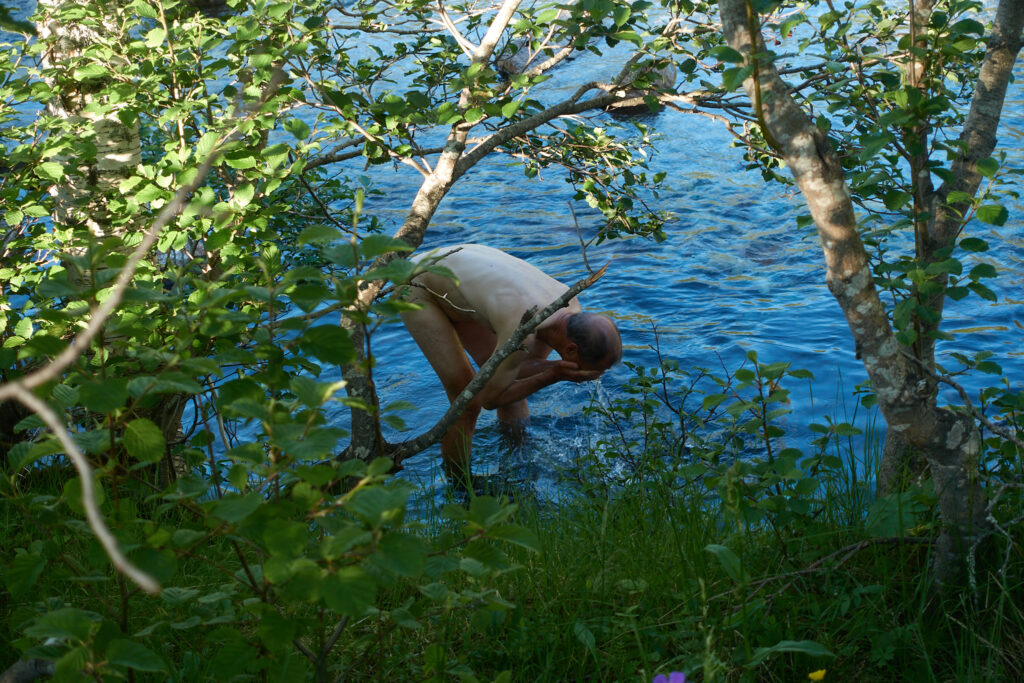
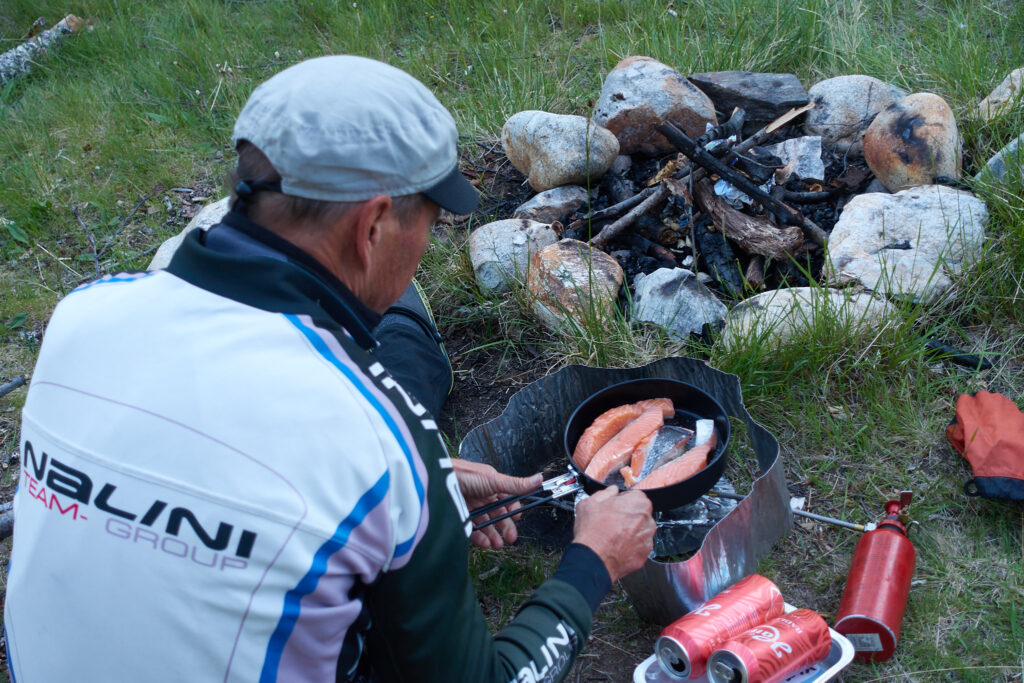
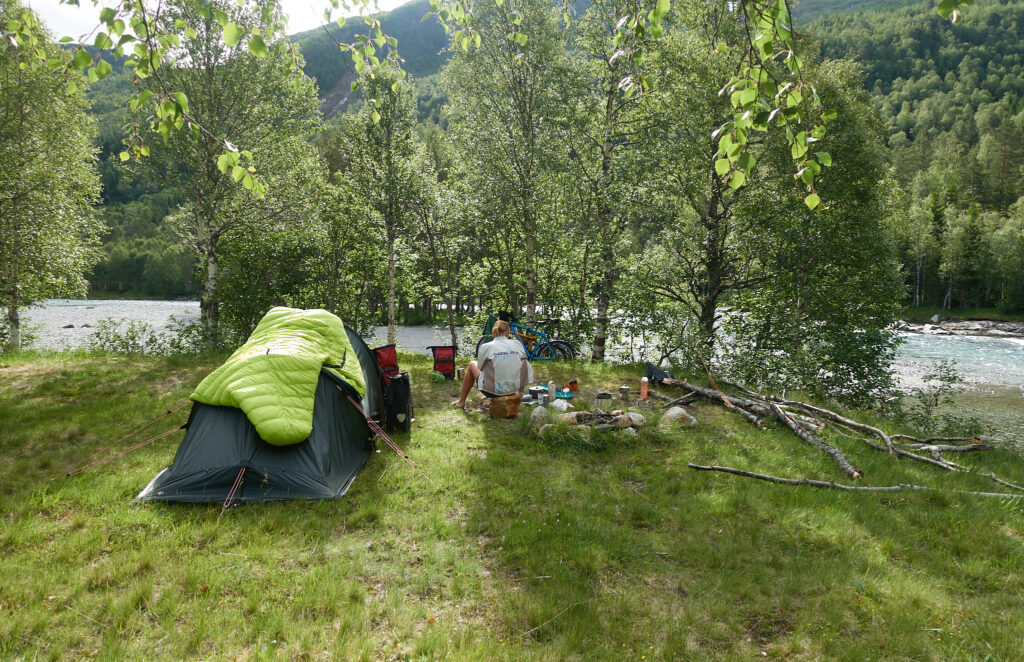
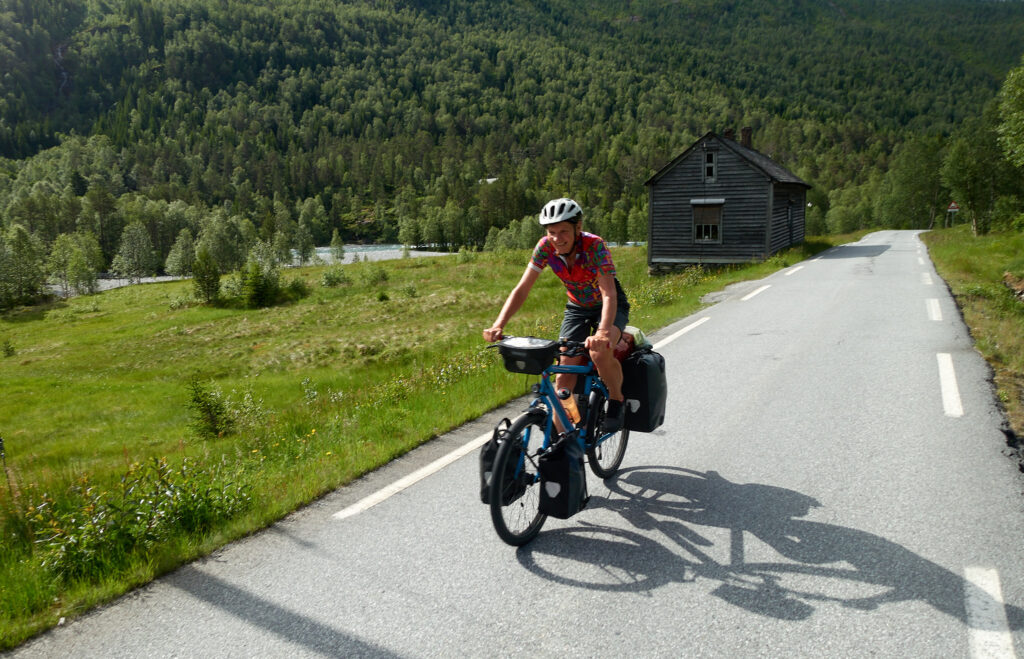
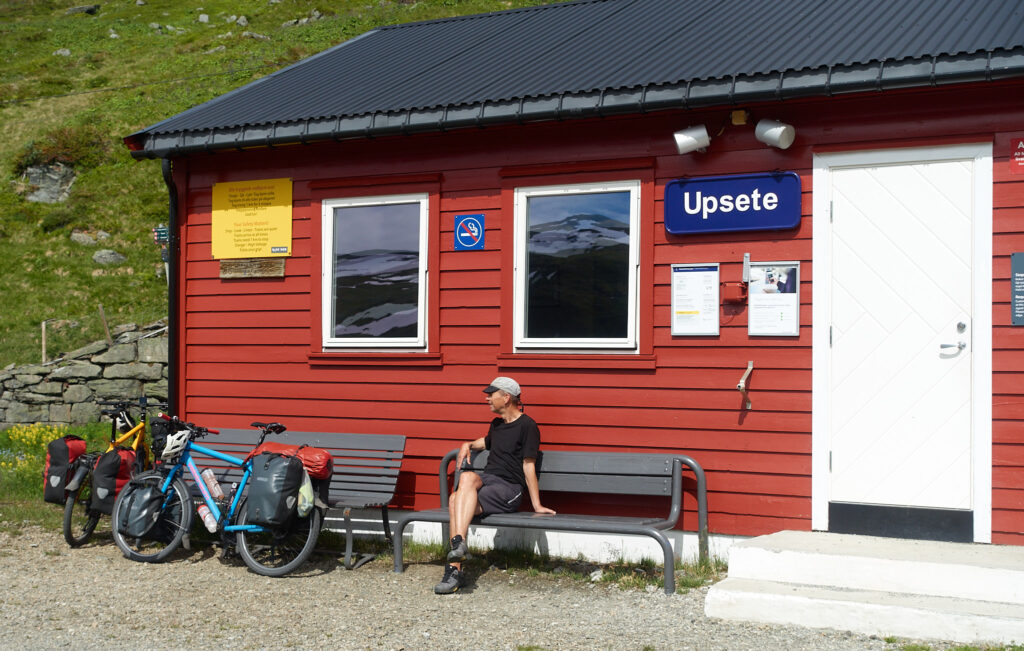
Via Upsete, Myrdal, Finse and all those places that consist of a train station with an on-demand stop, or which are virtually non-existent.
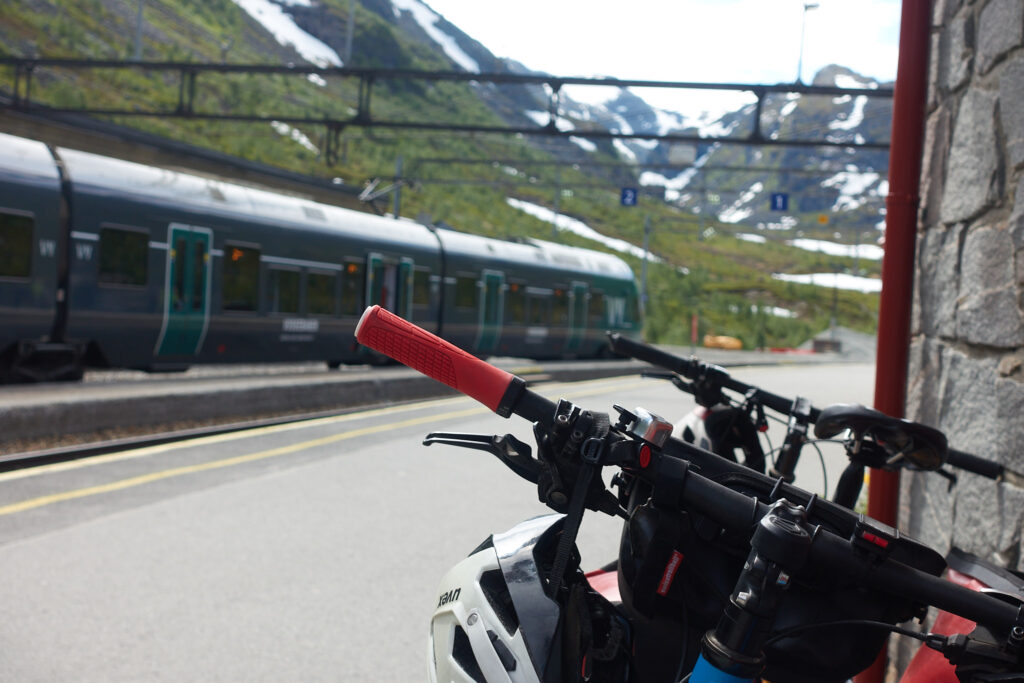
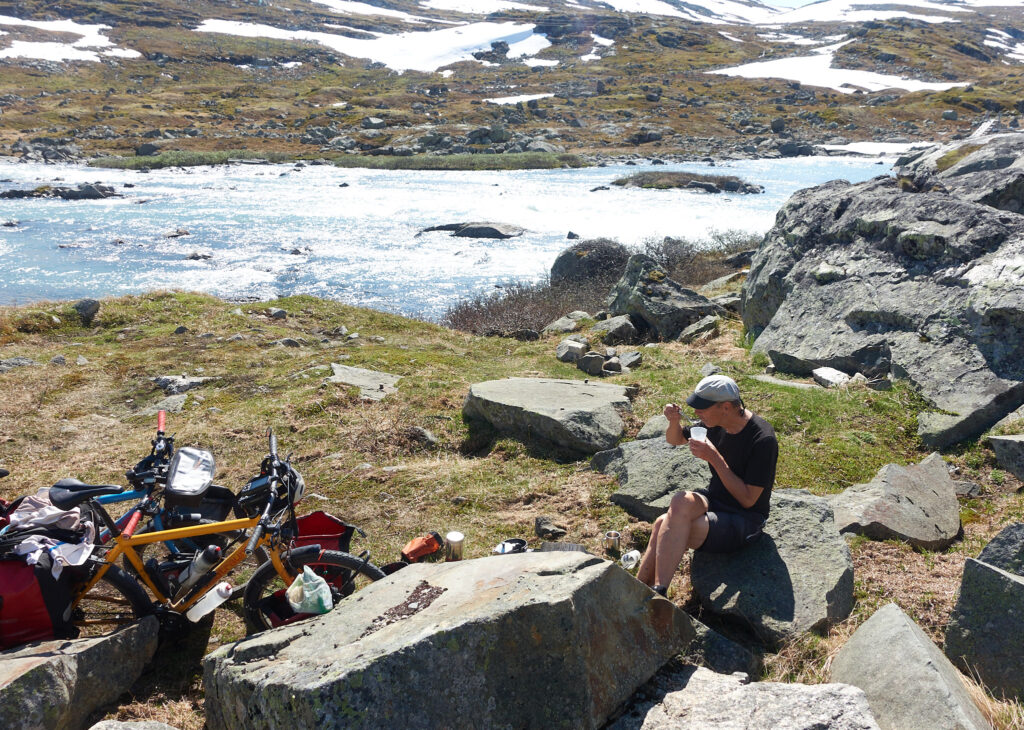
An entertaining stay on the camping meadow at the campsite in Geilo. We forget the less charming ski resort around us. We meet Christian from Linz at the campsite. He is eight weeks and 3000 kilometers on his way to the North Cape. We have a beer together and catch up. Maybe we will meet him again later in the season. It would not be the first time. A couple from Erding and two from Vienna have also pitched their tent. A Lithuanian family is camping here. Everything is very international and yet familiar.
The Numedal route heading south determines the direction. There is no real progress today.
The route is wonderful, suitable for roller skiing. The whole area is a ski touring paradise in winter. Astrid gets two flat tires. That stops us and is really annoying.
We pull into the small campsite in Norge. A spot by the Norefjord, a few permanent campers and a Joker supermarket. That is enough to keep you going.
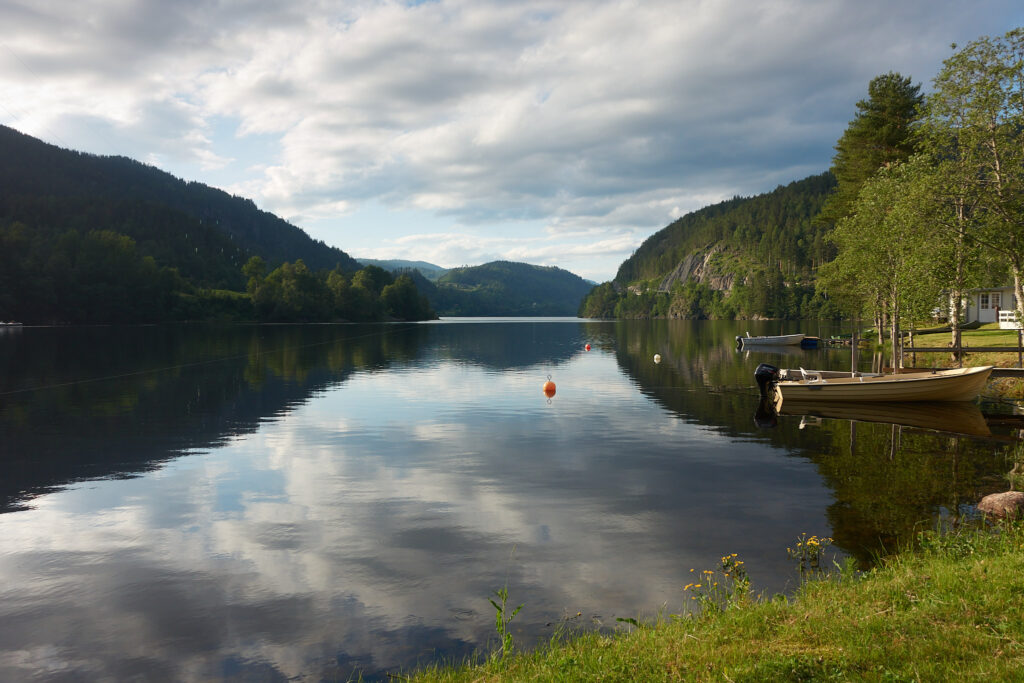
The next morning, we continue through the impressive Numedal valley. We visit one of the Norwegian stave churches from the 11th century (!)
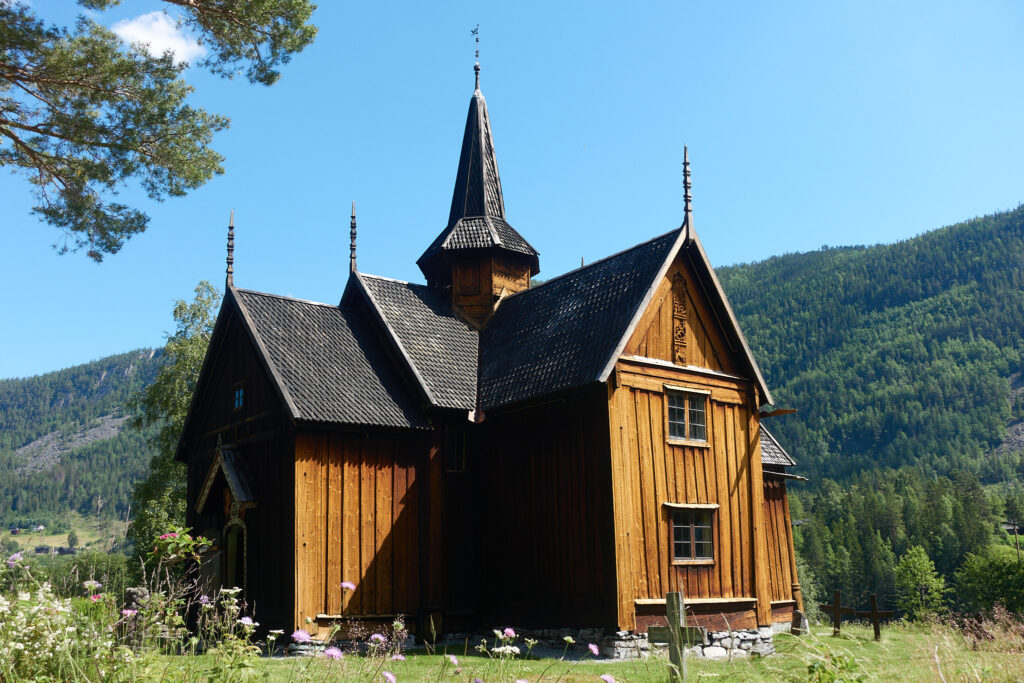
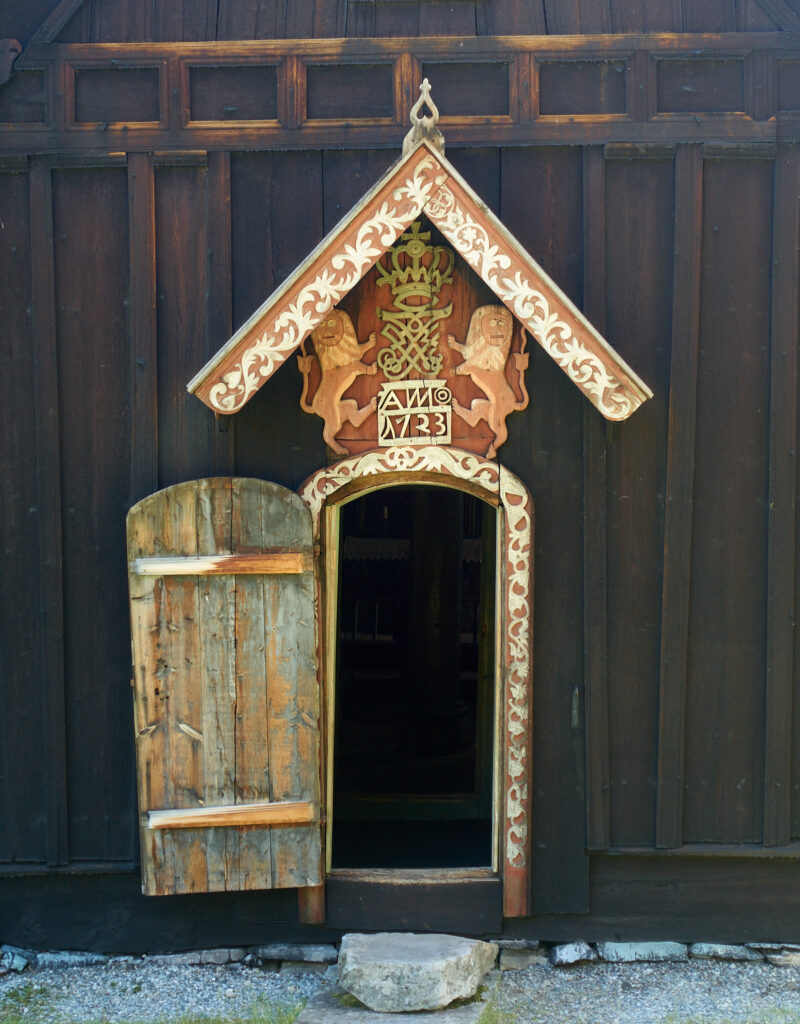
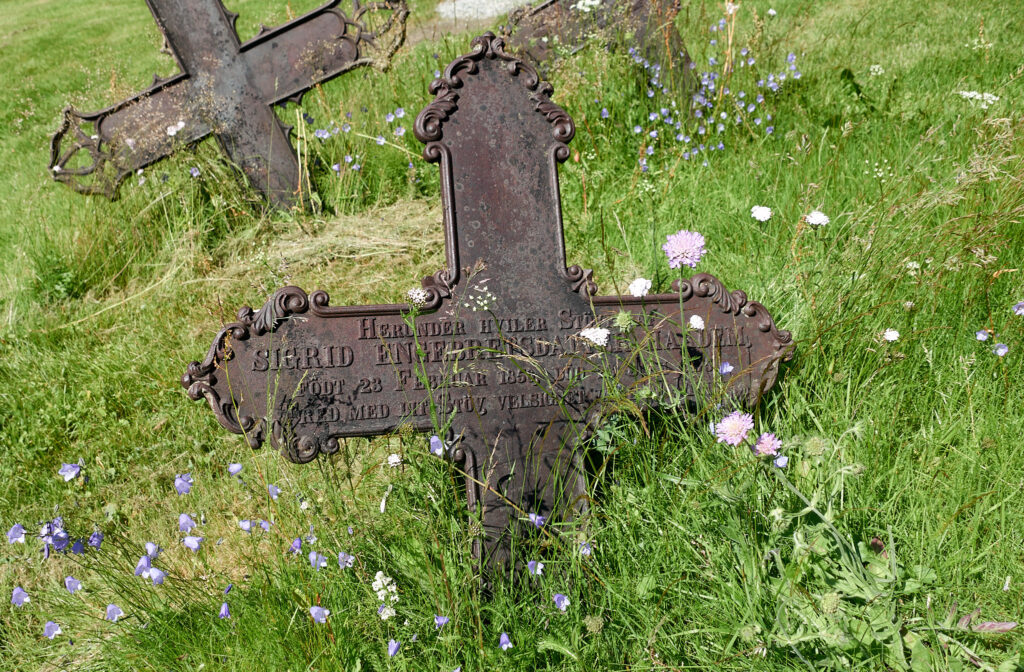
There is a shopping opportunity every 30 to 50 kilometers, often open until 11 p.m. or even 7 days/24 hours. The latter is really great for this sparsely populated country.
Norway, slightly larger than Germany, has around 5.2 million inhabitants which means that the population density in Germany is around 17 times higher at 226 inhabitants per square kilometer.
We also notice this on the roads. Unless it is a transit route, the roads are empty of vehicles. Cars drive very carefully. There are road users who do not exist here, e.g. roller skiers driving at high speed on two-lane roads with gradients > 9%. They are also announced by road signs.
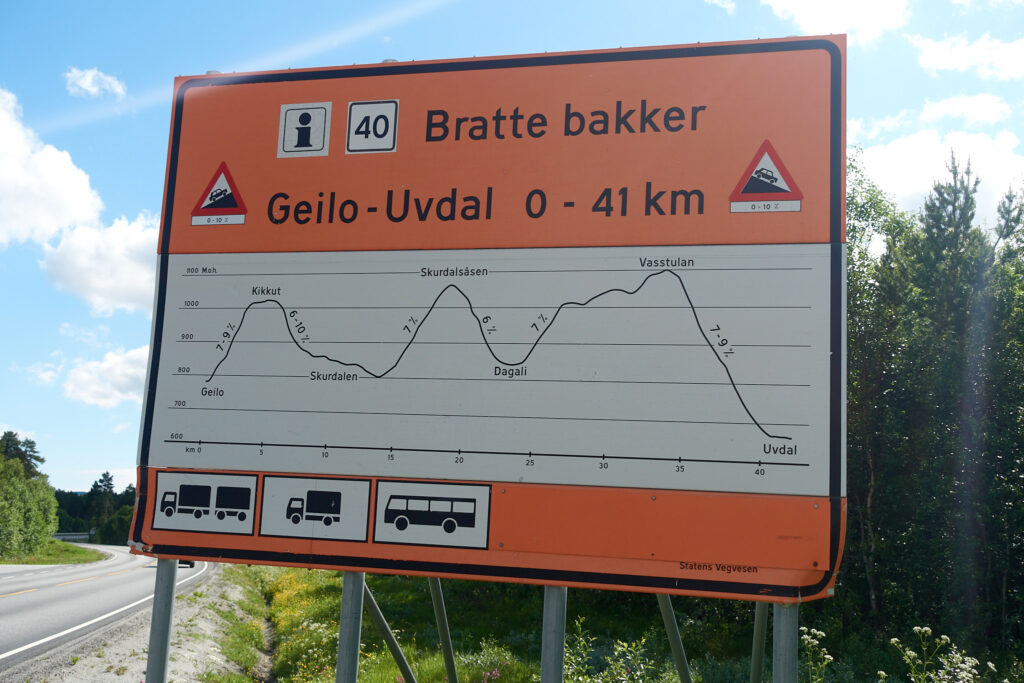
Kongsberg is our destination today. We camp behind the swimming pool. The hot shower is free, as is the camping. The sauna too. We do not use it because we have enough heat in us at 25 degrees.
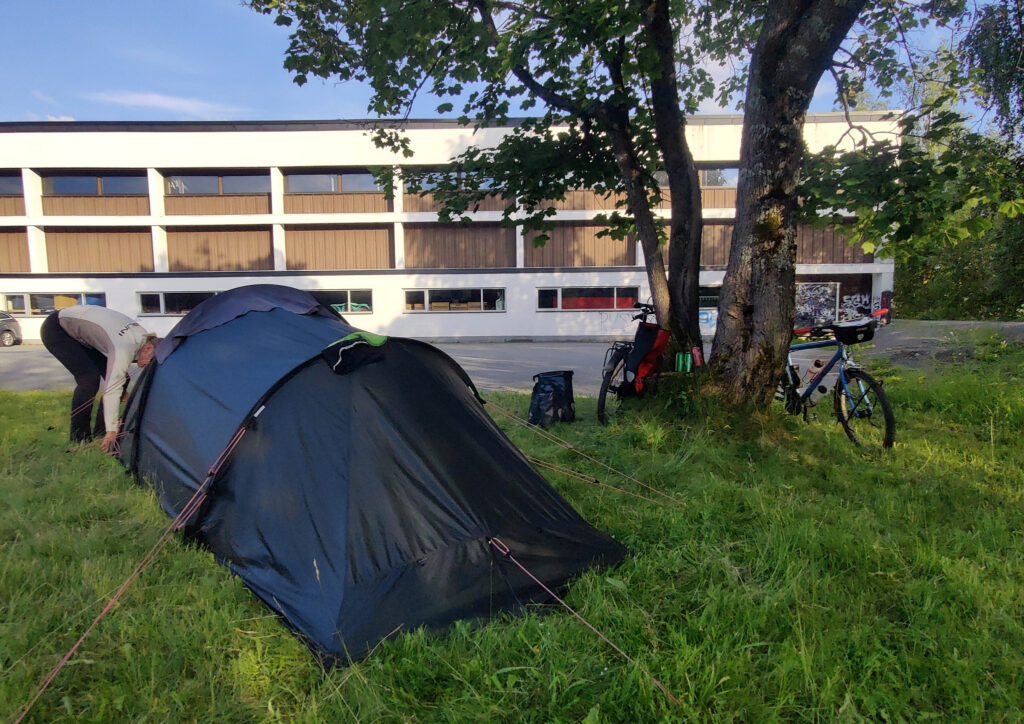
This is made possible by everyman’s right in Norway: Camping by the fjord, picking berries and mushrooms, barbecuing over an open fire and boating on lakes and rivers – these freedoms are known as “everyman’s rights” in Norway. The right applies to all uncultivated natural areas in the country.
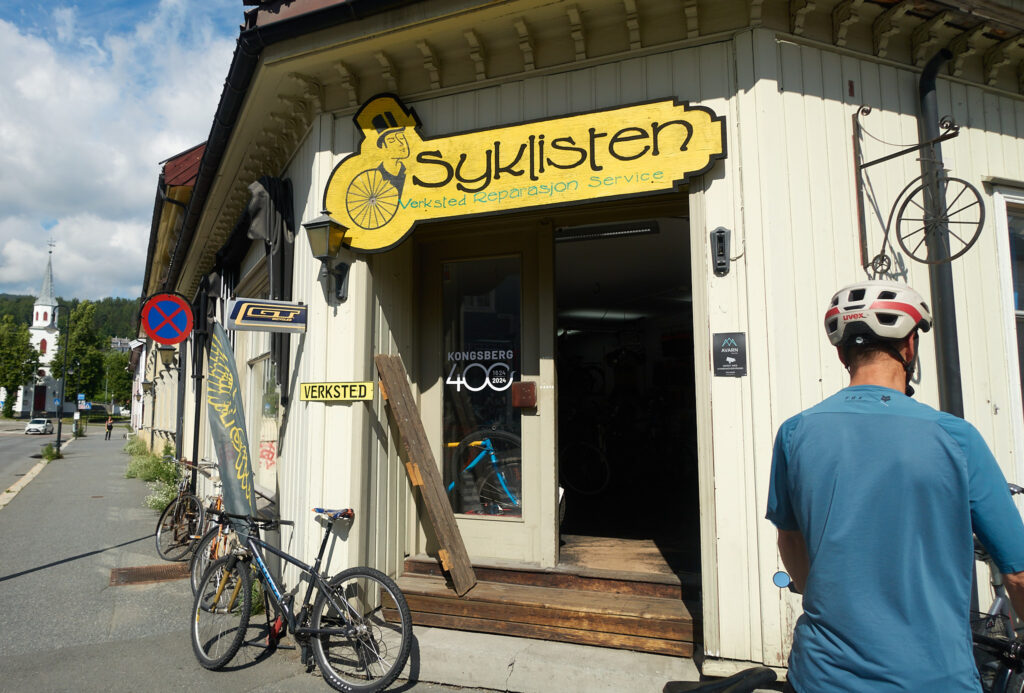
The Scandinavian Mountains run along the border with Sweden and have their highest peak on the Norwegian side at 2,469 meters at Galdhøpiggen. This mountain range is important for the European climate as it keeps Arctic air masses away. We love the Azores high that has been giving us sunshine for a week and appreciate the reliable weather forecast. It is just starting to pour. It is 11 p.m., as predicted.
We are heading straight for Sandefjord. We have left nature and are driving through cultivated land, Norway’s economy: salmon, oil and gas, minerals, forestry, Christmas trees, agriculture, sheep, grain, carrots, potatoes, strawberries and apples.
Our last night in Norway. An overnight stay on the Granholmen camping island. Swimming in the fjord at 20 degrees.
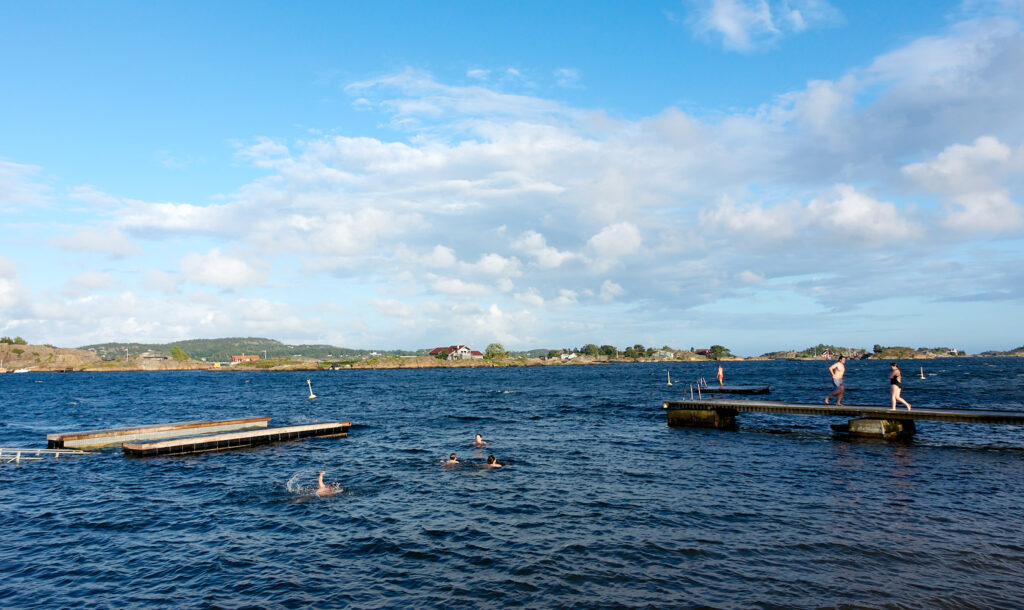
The next time we travel by water.
